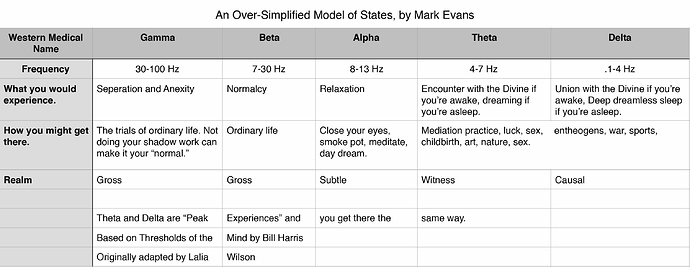I had always assumed that the gods were what most of you are describing: projections of the collective unconscious and so on. The most typical ‘benevolent’ approach to the gods in the mid 20th century held by, for example, Joseph Campbell and Jung (for most of his writings), was very much in line with an essentially materialistic view of reality (their views were benevolent as opposed to the outright negation of the gods). Recognizing gods as qualities of the human psyche projected upwards made sense, and appeared to offer a way to salvage some value of religion for modern people.
Therefore, I was surprised when, without any apparent diminution of my rational faculties or becoming swept up in a belief system, somewhere in my fifth decade I began to see that the gods were real.
Don’t get me wrong, I am not suggesting that they are real in the sense that they place somewhere in material reality (i.e., ‘up in heaven’), and I am not failing to recognize that any image of any god is largely the result of personal and cultural projections, and of course absolutist statements about gods are mistaken. But is there something more or less like an independent consciousness of the gods? That’s the real question, isn’t it? My answer is yes.
Western thinking for centuries now has posited a directional trajectory for reality that goes something like: matter + energy > life > consciousness. If that’s the case, then the gods are hooey. It would take a book-length explanation to deal with that, and fortunately there are plenty of books already out there on the subject. For a quick reference, I would cite Neoplatonism, Kabbalah, the mind-only school of Mahayana Buddhism (Yogachara), and to the best of my understanding the Madhyamika school of Mahayana Buddhism as well.
Schmooshing the many differences and subtleties of these and other approaches into an oversimplified paragraph, the idea is that consciousness is not a late-comer to existence, but is present from the very start, either co-existent with matter and energy or, more likely, exists prior to any manifest reality. There are multiple levels of reality, from pure undifferentiated consciousness through various levels of differentiation down, to material reality, which is perhaps only consciousness or mind slowed down to a manageable level for us slow kids on the cosmic spectrum who need three stable dimensions of space, unidirectional time, etc…
There are not only many levels of reality, but considerable variations and ‘localities’ on each level. These are the imaginal (not ‘imaginary’) realms, the astral planes, and so on. There are many interesting ideas about these levels and places, but given their nature (free of the constraints of things like unidirectional time), it’s hard to say much that satisfies those of us who are used to more fixed coordinates.
It’s in those realms that we find the gods, along with all sorts of other beings. Of course, we can only experience them in ways that make sense to those of us on this plane, which helps explain why there’s so much variation and a lack of consistency. We are indeed projecting our reality onto theirs, but it’s not just a projection. In ultimate terms of mind-only, emptiness, ein sof, etc, the gods don’t really exist - but then again, neither do you. It’s all Maya, on this or any other level, but that doesn’t negate that there are other levels, however it looks from here.
It’s a long answer, late to the discussion, and way short of convincing, I’m sure. But the thing is, you don’t understand the existence of the gods through a logical argument, but through experience, and that isn’t happening in a post of any size.

